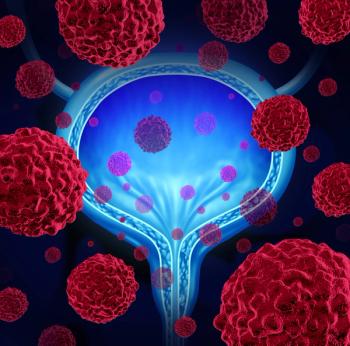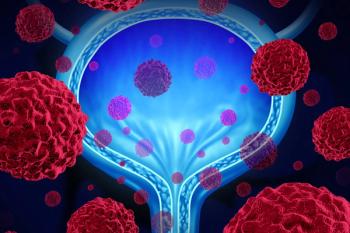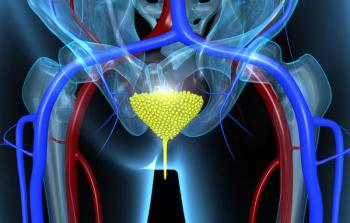
Systemic Therapy for Advanced Bladder Cancer Evolves
Dr. Elizabeth Plimack discusses her 2018 AACR meeting presentation on recent advances in systemic therapy for bladder cancer.
Ahead of the American Association for Cancer Research annual meeting, being held April 14–18 in Chicago, Illinois, we spoke with Elizabeth Plimack, MD. Dr. Plimack is chief of the division of genitourinary medical oncology and director of genitourinary clinical research at the Fox Chase Cancer Center in Philadelphia, where she specializes in the treatment of genitourinary cancers, including bladder cancer. At the meeting, she will be discussing recent advances in systemic therapy for bladder cancer, in a presentation entitled, “Systemic Therapy for Locally Advanced and Metastatic Bladder Cancer: A Rapidly Evolving Landscape.”
-Interviewed by Anna Azvolinsky
Cancer Network: First, can you talk about the standard surgical and therapy options for locally advanced disease that have been around now for a while, and then how these contrast with the options for metastatic bladder cancer patients?
Dr. Plimack: Sure. Bladder cancer has a variety of presentations. And in fact, the majority of people who develop bladder cancer have what is called noninvasive or localized bladder cancer, which can be treated with topical instillations and procedures done to the bladder itself.
Beyond that, there is a subset of patients with muscle-invasive bladder cancer, and that is what we talk about as locally advanced bladder cancer. Those patients can be cured of their cancer, but it requires what we call multimodality treatment with both chemotherapy and surgery and, in some cases, chemotherapy with radiation. The difference between that state and the metastatic state is that the locally advanced state we are treating with a curative intent and in the metastatic setting, although treatable, the cancer is not curable.
So the goals of care are different and the treatment paradigm is different. I can speak first about best practices for patients with locally advanced muscle-invasive bladder cancer. The treatment algorithm for those patients is fairly well defined, with multiple guideline groups-NCCN [National Comprehensive Cancer Network], the AUA [American Urological Association], and the European groups recommending chemotherapy prior to surgery to increase the chance of a cure, defined as being disease-free at 5 years. We know that adding chemotherapy prior to treatment (typically surgery), helps. Recently, novel developments suggested that chemotherapy alone may be curative for a subset of patients, perhaps 10% to 30% of patients, and we are finding trials in that space to allow for patients to keep their bladders when chemotherapy is curative. I will be speaking about that in my talk at AACR.
Cancer Network: What are some of the new treatment modalities that have recently been approved for either locally advanced or metastatic bladder cancer?
Dr. Plimack: In locally advanced disease, we have developed [potential therapeutic regimens] and have started to enroll in clinical trials, looking to identify complete responders to chemotherapy and allowing for bladder-sparing. Those are the trials that are ongoing but have not yielded data yet. We are waiting for data on the
But also, this trial will help us define a number of biomarkers, including the ‘COXEN’ biomarker for which the trial was designed. And again, we are waiting for data on all of those trials. In the metastatic setting, it’s a different story. We have had an explosion of data over the last 3 years, which has defined and changed how we treat metastatic patients. And I will be speaking about that in my talk at AACR as well.
Just as an overview, prior to 2016, the last time a drug was approved for metastatic bladder cancer was in the 1970s, when cisplatin and doxorubicin were approved, which is a really long drought that we had of treatment for metastatic disease. We’ve been dependent entirely on chemotherapy up until that time.
Since 2016, a number of checkpoint inhibitors have been approved in the US, and those are now used in both the frontline and second-line setting for patients with metastatic bladder cancer. I will be speaking in my talk about the comparative data across these different agents, their toxicity profile and what questions still remain in terms of guiding their use. A couple of key points to make about the use of these novel checkpoint inhibitors in bladder cancer once it’s metastatic: There are five of these agents approved; all of them inhibit either PD-1 [programmed cell death 1]or PD-L1 [programmed death-ligand 1] and are all in the same pathway. Those drugs are pemrolizumab, atezolizumab, avelumab, durvalumab, and nivolumab.
While it seems like we have five new options, they really all do the same thing and there is no evidence that after we treat with one, treating with another one of those five will yield responses. So what we have that is growing is a group of patients who have had chemotherapy and had [treatment with] a checkpoint inhibitor who now need a novel therapy. I am particularly excited about data emerging in that space, helping patients either reinvigorate their immune response against their cancer or treat with a non-immunotherapy targeted agent such as a VEGF [vascular endothelial growth factor] inhibitor, an inhibitor of NECTIN-4, a novel antibody drug conjugate; that is currently in clinical trials.
In terms of reinvigorating the immune response for patients whose tumors have evaded their single-agent PD-1 or PD-L1 therapy, there are a couple of really interesting approaches. One is with epacadostat plus pembrolizumab. Epacadostat makes the immune microenvironment more appropriate for immune surveillance and [achieving] an antitumor effect. Then a study we are running here, funded by Stand Up 2 Cancer, is looking at hypomethylation to reinvigorate the immune response both by changing the biology of T-lymphocytes and the immune microenvironment. So we are excited about all of those trials, which are all currently enrolling-and many are in phase III already.
Cancer Network: Are there additional therapies you haven’t mentioned, with different mechanisms of action, that are still in development and appear to be promising?
Dr. Plimack: There are many. What is exciting for us in treating urothelial cancer is that this disease was one that was usually avoided in trying to develop new drugs; most of the development went to the more common tumor types. The truth is that bladder cancer is very common and has been very responsive to many treatments. So there has been an influx of interest in developing novel agents for this disease, which is great.
One area that we will be looking at closely is earlier stages of disease, so non–muscle-invasive bladder cancer. Again, most of these patients can be treated with treatments that are directly just to the bladder, but there are a lot of rationales for trying both immunotherapies and targeted agents in this space. Again, ideally, the goal is to cure patients of their bladder cancer with systemic therapy, and make sure that they don’t go to surgery.
Now, if the disease cannot be controlled topically, those patients end up with surgical removal of their bladder. Research in that space is interesting and promising, and some of that data will be presented at AACR.
Newsletter
Stay up to date on recent advances in the multidisciplinary approach to cancer.
















































































